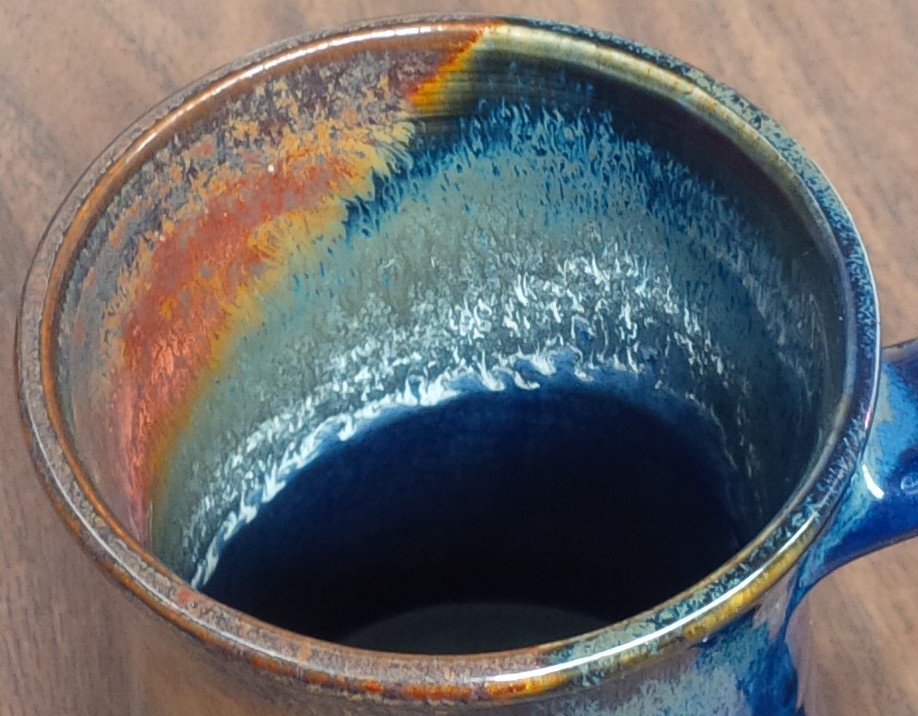Commercial supposedly safe glazes leaching. A liner glaze is needed.
Three cone 6 commercial bottled glazes have been layered. The mug was filled with lemon juice overnight. The white areas indicate insight-live.com/glossary/54">leaching has occurred! Why? Glazes need high melt fluidity to produce reactive surfaces like this. While such normally tend to leach metals, supposedly the manufacturers were able to tune the chemistry enough to pass tests. But the overlaps interact, like drug interactions they are new chemistries. Cobalt is clearly leaching. What else? We do not know, these recipes are secret. It is better to make your own transparent or white liner glaze (either as a dipping glaze or brushing glaze). Better to know the recipe to have assurance of adherence to basic recipe limits.
Are commercial glazes really guaranteed food safe? When manufacturers claim adherence to standards like ASTM D-4236 what are they saying? The small amounts of liquid glazes are safe for the artist to brush on. They are not making claims about leaching on finish ware.
Pages that reference this post in the Digitalfire Reference Library:
GLLE Glaze Leaching Test, Where do I start in understanding glazes?, Commercial glazes on decorative surfaces, your own on food surfaces, Food Safe, Digitalfire Tech Tips PDF Handouts, Leaching, Functional, Liner Glaze, Commercial hobby brushing glazes

This post is one of thousands found in the Digitalfire Reference Database. Most are part of a timeline maintained by Tony Hansen. You can search that timeline on the home page of digitalfire.com.
